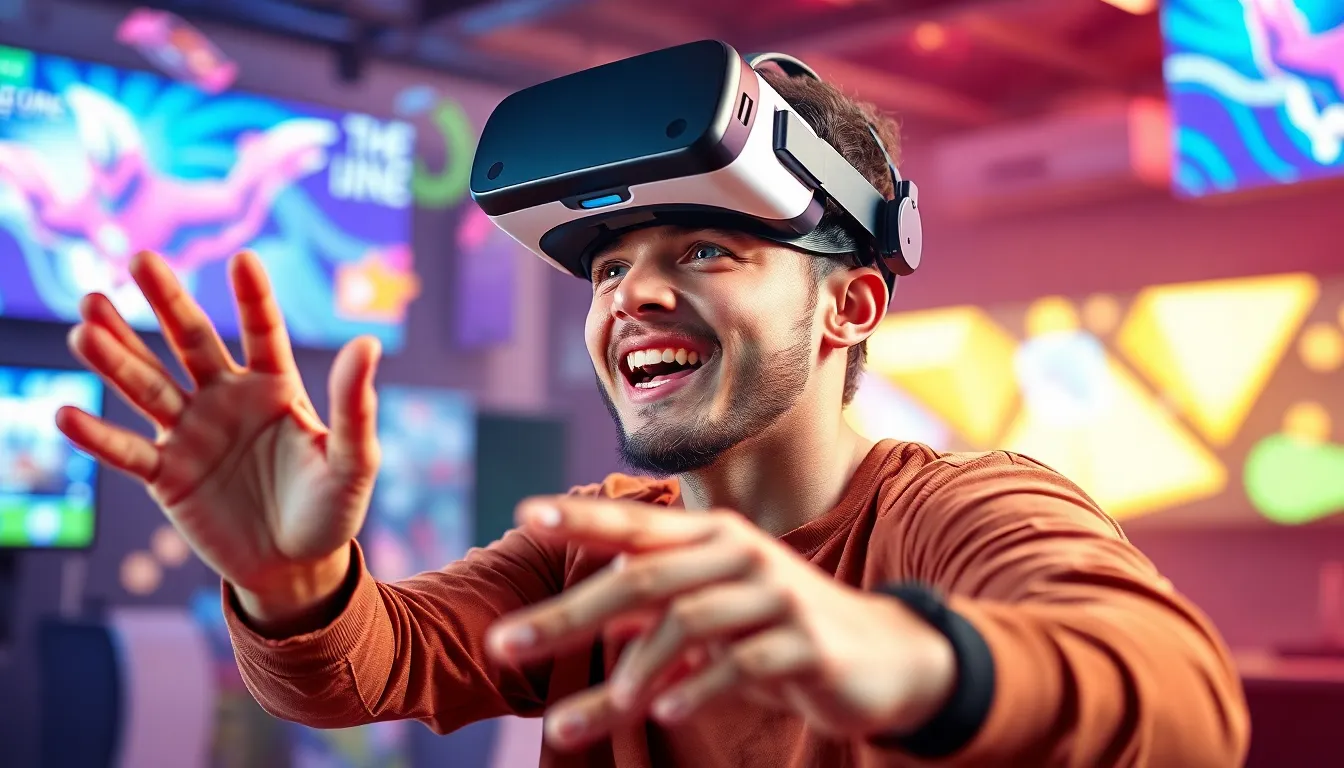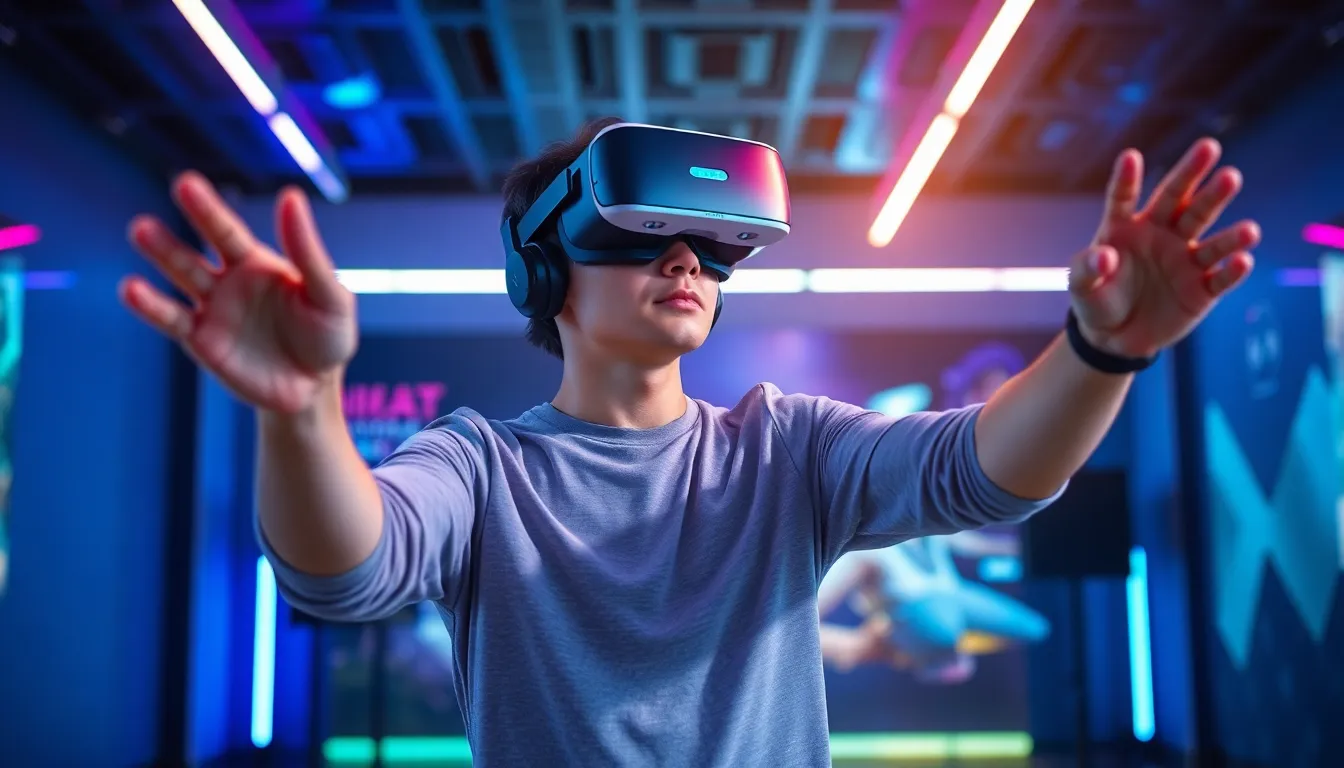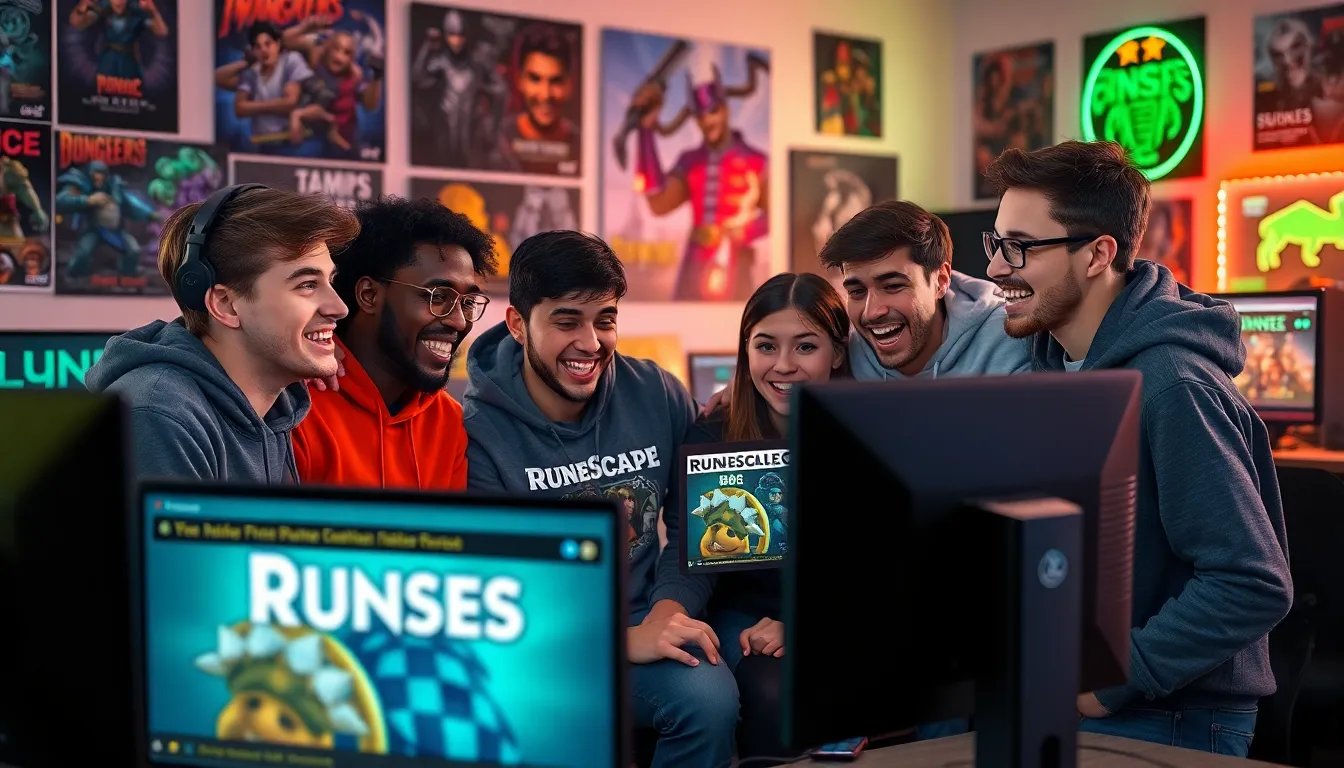Virtual reality has revolutionized the gaming landscape, immersing players in breathtaking worlds like never before. As the technology advances, game trailers have become a vital tool for developers to showcase their creations. These trailers not only highlight stunning graphics and gameplay mechanics but also create an emotional connection that draws players in.
In a crowded market, a captivating VR game trailer can make all the difference. It serves as a first impression, enticing gamers to explore new experiences. With the ability to transport viewers into a game’s universe, these trailers are essential for building excitement and anticipation. Understanding the elements that make a VR game trailer truly engaging can help developers craft experiences that resonate with their audience.
Table of Contents
ToggleOverview of VR Game Trailers
VR game trailers serve as vital marketing tools that attract and engage potential players. Developers utilize these trailers to highlight breathtaking visuals and immersive gameplay, fostering a connection with their audience.
Importance of Trailers in Gaming
Trailers in gaming play a crucial role in capturing interest and driving excitement. They provide a visual summary of game features, storytelling, and gameplay mechanics. With 90% of consumers preferring video content over text, trailers effectively convey a game’s essence. Engaging trailers can enhance brand awareness and influence purchasing decisions, making them indispensable for developers aiming to stand out in a crowded marketplace.
Evolution of VR Game Trailers
The evolution of VR game trailers reflects advancements in technology and creative storytelling. Early VR trailers focused on showcasing basic functionalities and graphics. As hardware improved, trailers began incorporating cinematic elements and sophisticated effects. Recent trends emphasize interactive and immersive experiences, allowing viewers to engage with trailers through VR headsets. This shift not only enhances viewer experiences but also illustrates the game’s potential, setting a new standard for how VR titles are marketed.
Elements of Effective VR Game Trailers

Effective VR game trailers seamlessly combine various elements to capture the viewer’s attention and convey the game’s essence. The right balance of visuals, audio, and narrative can elevate a trailer from ordinary to exceptional.
Visual and Audio Quality
Visual and audio quality play pivotal roles in engaging audiences. High-definition graphics showcase the immersive environments and intricate details inherent in VR. A well-crafted visual aesthetic, including lighting and color schemes, enhances the overall experience. Audio components, such as sound design and music, should complement the visuals; dynamic soundscapes and impactful scores contribute to an emotional connection. Trailers that utilize spatial audio create an immersive audio experience, making the viewer feel as if they’re part of the game world.
Storytelling Techniques
Storytelling techniques engage viewers by immersing them in the game’s narrative. Effective trailers often feature a clear, concise storyline, establishing character motivation and conflict within the short runtime. Utilizing cinematic techniques, such as pacing and framing, keeps viewers interested from start to finish. Trailers may include character dialogue or narrative voiceovers to enhance storytelling. Incorporating cliffhangers or intriguing plot elements encourages potential players to seek out more information about the game. Overall, strong storytelling techniques elevate a trailer by forging an emotional connection, making the game memorable.
Notable VR Game Trailers
Notable VR game trailers exemplify the dynamic nature of virtual reality in gaming. They showcase groundbreaking innovations in immersive experiences and storytelling that capture gamer interest effectively.
Case Study: Immersive Experiences
Immersive VR game trailers engage viewers through breathtaking visual fidelity and interactive gameplay mechanics. Titles like Half-Life: Alyx feature stunning environments, allowing players to manipulate objects and interact with characters seamlessly. The trailer highlights realistic physics, spatial audio, and responsive gameplay elements that enhance immersion. Another example, Beat Saber, utilizes rhythmic visual effects and engaging music to create a palpable energy, showcasing the excitement of rhythm-based gameplay. These elements not only draw attention but also leave a lasting impression on potential players.
Case Study: Innovative Storytelling
Innovative storytelling is a hallmark of successful VR game trailers. Lone Echo illustrates this with its gripping narrative that unfolds through an emotionally driven journey in a futuristic environment. The trailer employs cinematic techniques such as character development and dialogue, establishing a connection between the protagonist and the audience. Similarly, Moss integrates a charming story, where the player guides a small mouse named Quill through a rich, enchanted world. This unique narrative approach invites players to become part of the story, creating an emotional investment that encourages exploration and interaction. By leveraging compelling narratives, VR game trailers successfully pique interest and foster player engagement.
Trends in VR Game Trailers
The landscape of VR game trailers continually evolves, reflecting advancements in technology and changing audience expectations. Developers increasingly incorporate innovative techniques to enhance viewer engagement and storytelling.
Use of Technology
Emerging technologies play a pivotal role in the creation of VR game trailers. Developers utilize high-resolution graphics powered by advanced GPUs, enabling lifelike visual representations. Furthermore, augmented reality (AR) elements often enhance trailers, providing interactive components that captivate viewers.
New software tools allow for real-time rendering, which streamlines the production of immersive experiences. By incorporating spatial audio, trailers create a 360-degree sound environment, enhancing the overall impact. Some developers employ artificial intelligence to analyze viewer preferences, tailoring content for maximum engagement.
Audience Engagement Strategies
Developers increasingly focus on strategies that resonate with their target audience. Story-driven trailers establish emotional connections, drawing viewers into the game’s world. Many trailers utilize cliffhangers or mysterious narratives, sparking curiosity and prompting discussions among potential players.
Incorporating user-generated content also fosters community involvement and engagement. Trailers that include fan-created elements or highlight player experiences strengthen brand loyalty. To further enhance engagement, live streaming events featuring interactive trailers allow real-time audience participation, creating buzz around upcoming releases.
Overall, understanding these trends enables developers to craft impactful VR game trailers that stand out in a competitive market.
The evolution of VR game trailers marks a significant shift in how games are marketed and experienced. As developers harness cutting-edge technology and innovative storytelling techniques, these trailers have become essential tools for capturing the attention of potential players. Engaging visuals and immersive audio create an unforgettable first impression that can drive interest and excitement.
By understanding the key components that make a trailer effective, developers can craft compelling narratives that resonate with audiences. As the gaming landscape continues to evolve, the importance of creating high-quality VR game trailers cannot be overstated. They not only showcase the unique aspects of a game but also foster an emotional connection that encourages players to dive into new virtual worlds.








